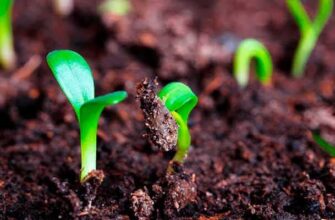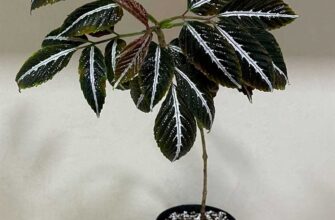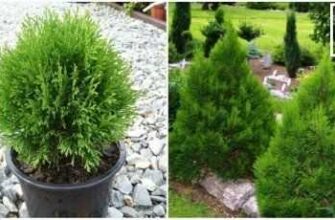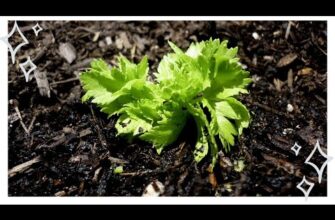- Как создать и ухаживать за изгородью из туи
- Посадка туи:
- Обрезка туи:
- Полив туи:
- Подкормка туи:
- Советы садовода по посадке изгороди из туи
- Советы садовода по обрезке
- Советы садовода по поливу
- Советы садовода по подкормке
- Как выбрать место для посадки изгороди из туи
- 1. Световой режим
- 2. Почва и дренаж
- 3. Защита от сквозняков
- Как подготовить почву для посадки туи
- Особенности посадки туи
- Как правильно обрезать туи
- 1. Выберите правильное время для обрезки
- 2. Используйте острый инструмент
- 3. Формируйте изгородь поэтапно
- 4. Удаляйте поврежденные и больные ветки
- 5. Подкармливайте туи после обрезки
- Как обеспечить полив туи
- Как подкормить туи для их здоровья
- Как ухаживать за изгородью из туи в зимний период
- Вопрос-ответ:
- Какую тую выбрать для создания изгороди?
- Какой должна быть ширина и высота изгороди из туи?
- Как правильно посадить тую для создания изгороди?
- Как часто нужно обрезать изгородь из туи?
- Как правильно поливать и подкармливать изгородь из туи?
- Видео:
- КАК СОЗДАТЬ ИДЕАЛЬНУЮ ЖИВУЮ ИЗГОРОДЬ ИЗ ТУЙ? Лучшие сорта туй, особенности посадки и ухода

Изгородь из туи — это отличное решение для создания живой и красивой границы вашего участка. Туя является одним из самых популярных растений для формирования изгородей. Она обладает пышным и густым хвойным покровом, который придает участку декоративность и приватность. Однако, чтобы изгородь из туи оставалась здоровой и красивой, требуется правильный уход.
Первый шаг — это правильная посадка туи. Выберите место с хорошим солнечным освещением и хорошим дренажем. Расстояние между растениями должно быть примерно полметра, чтобы обеспечить им достаточно места для роста. Туя предпочитает влажную почву, поэтому не забудьте о регулярном поливе.
Обрезка является важным этапом ухода за изгородью из туи. Она помогает сохранить компактную форму растений и улучшить их ветвление. Обрезку следует проводить весной и осенью. Удалите старые и поврежденные ветки, придавая изгороди желаемую форму. Также можно проводить побочные обрезки в течение года, чтобы сохранить изгородь в прекрасном состоянии.
Полив — еще одна важная процедура при уходе за изгородью из туи. Регулярный полив помогает поддерживать влажность почвы и обеспечивает хороший рост растений. Но помните, что туя не любит переувлажнения, поэтому не злоупотребляйте поливом. Подкормка также важна для здорового роста и развития туи. Используйте специальные удобрения для хвойных растений, которые содержат все необходимые питательные вещества.
Следуя этим советам, вы сможете создать и поддерживать красивую и здоровую изгородь из туи. Правильная посадка, регулярная обрезка, полив и подкормка — все это необходимо для достижения желаемого результата. Не забывайте, что туя требует внимания и заботы, но она стоит своего труда!
Как создать и ухаживать за изгородью из туи
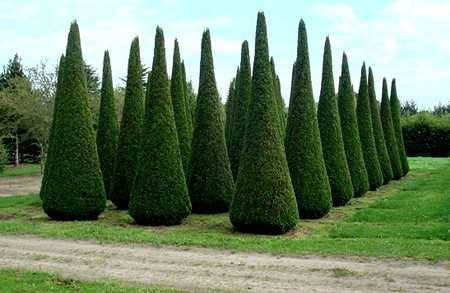
Изгородь из туи является популярным выбором садовода благодаря своей густоте и декоративности. Если вы планируете создать изгородь из туи, вам полезно знать несколько советов о ее посадке, обрезке, поливе и подкормке.
Посадка туи:
Перед посадкой туи, необходимо выбрать подходящее место, где она будет расти. Туя предпочитает солнечное или полутенистое место и хорошо дренированный почву. При посадке необходимо учесть расстояние между растениями, чтобы они имели достаточно места для роста.
Обрезка туи:

Обрезка туи является важным этапом ухода за изгородью. Она помогает поддерживать форму и густоту растений. Обрезку туи рекомендуется проводить весной или осенью. При обрезке следует удалять сухие или поврежденные ветки, а также формировать желаемую форму растения.
Полив туи:
Туя требует умеренного полива. Регулярный полив необходим в период активного роста, особенно во время жаркой погоды. Однако следует избегать переувлажнения почвы, чтобы не вызвать гниение корней. Перед поливом проверьте влажность почвы и поливайте только в случае необходимости.
Подкормка туи:
Для поддержания здоровья и красоты туи рекомендуется проводить подкормку. Подкормку можно выполнять раз в год весной или осенью. Используйте специальные удобрения для хвойных растений, следуйте инструкциям на упаковке. Подкормка поможет туе получить все необходимые питательные вещества для роста и развития.
Советы садовода по посадке изгороди из туи
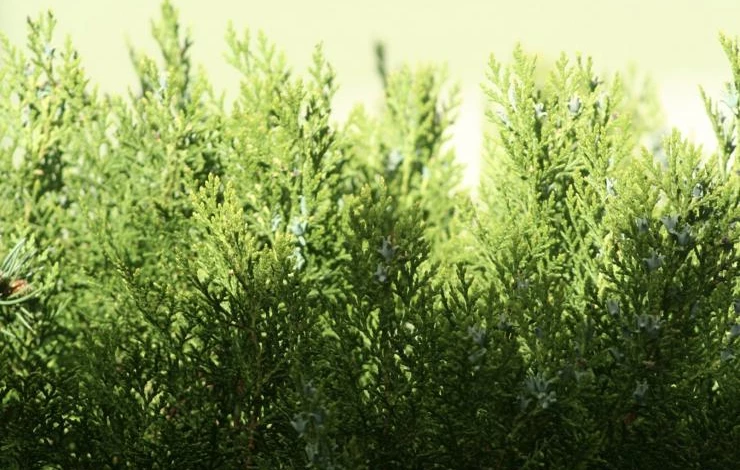
1. Выберите правильное место для посадки туи: участок должен быть хорошо освещен, но не под прямыми солнечными лучами. Туя предпочитает рыхлую, хорошо дренированную почву.
2. Подготовьте почву: удалите сорняки и камни, рыхлите землю. Добавьте органическое удобрение или перегной для улучшения плодородия почвы.
3. Правильно размещайте растения: растения туи должны быть размещены на расстоянии 30-60 см друг от друга, чтобы они имели достаточно места для роста и развития.
4. Внимательно поливайте растения: регулярно поливайте туи после посадки и в период сухой погоды. Держите почву влажной, но не переувлажняйте.
5. Обрезайте изгородь: садоводы рекомендуют проводить обрезку туи в начале весны или осенью, чтобы сохранить форму и плотность изгороди.
6. Подкармливайте растения: регулярно подкармливайте туи специальным удобрением для хвойных растений, чтобы обеспечить им необходимые питательные вещества.
7. Следите за состоянием растений: регулярно осматривайте изгородь из туи на наличие болезней и вредителей. В случае обнаружения проблем, примите меры по их устранению.
Советы садовода по обрезке

Обрезка является важной частью ухода за изгородью из туи. Садоводы рекомендуют проводить обрезку весной и осенью, чтобы контролировать рост растений и сохранять желаемую форму изгороди.
При обрезке изгороди из туи следует удалять поврежденные, больные или сухие ветки. Это поможет улучшить здоровье растений и способствовать их правильному развитию.
Садоводы также рекомендуют проводить формировочную обрезку, чтобы дать изгороди желаемую форму. При этом следует учесть, что туя хорошо переносит стрижку и может быть подстрижена в различные формы, такие как прямые или волнистые линии.
Для проведения обрезки следует использовать острые и чистые инструменты, чтобы избежать повреждения растений. После обрезки рекомендуется подкормить изгородь специальным удобрением, чтобы обеспечить растения необходимыми питательными веществами.
Важно помнить, что обрезка изгороди из туи должна проводиться регулярно, чтобы поддерживать ее желаемую форму и здоровье растений. Следуя советам садовода, вы сможете создать и ухаживать за изгородью из туи, которая будет радовать вас своим красивым видом.
Советы садовода по поливу
Правильный полив играет важную роль в уходе за изгородью из туи. Следуйте следующим советам садовода, чтобы обеспечить здоровый рост и развитие растений:
- Определите частоту полива: Регулярные поливы особенно важны в первые годы после посадки туи. Затем частоту поливов можно сократить, но следите за состоянием почвы и растений. Помните, что избыточный полив может привести к гниению корней, а недостаточный полив может вызвать засуху.
- Выбирайте правильное время для полива: Лучше всего поливать туи в ранние утренние или поздние вечерние часы, когда солнце не так ярко и почва успевает впитать влагу. Это поможет избежать испарения воды и ожогов на листьях.
- Используйте правильный объем воды: Каждый раз поливайте изгородь достаточным количеством воды, чтобы она достигала корневой зоны растений. При этом старайтесь избегать затопления почвы и стояния воды около корней.
- Выберите метод полива: Для полива туи можно использовать различные методы, включая полив из шланга, капельный полив или автоматическую систему полива. Каждый метод имеет свои преимущества, но важно следить за равномерным распределением влаги по всей изгороди.
- Учитывайте погодные условия: В жаркие и сухие периоды поливайте туи чаще, чтобы защитить их от перегрева и обезвоживания. Во время дождей можно снизить частоту полива, но не забывайте проверять влажность почвы.
Следуя этим советам, вы сможете обеспечить оптимальный режим полива для изгороди из туи и поддерживать ее здоровье и красоту на протяжении всего сезона.
Советы садовода по подкормке

Правильная подкормка является важным этапом в уходе за изгородью из туи. Садоводы рекомендуют проводить подкормку регулярно, чтобы обеспечить растения необходимыми питательными веществами.
Для подкормки можно использовать специальные удобрения для хвойных растений, содержащие необходимые микроэлементы. Жидкие удобрения лучше всего вносить в почву весной и осенью, чтобы растения получили достаточное количество питательных веществ перед зимой и после зимнего периода.
Также можно использовать органические удобрения, такие как компост или перегноя. Они помогут улучшить структуру почвы и обеспечат растения дополнительными питательными веществами.
Не стоит забывать и о важности правильного полива при подкормке. Полив следует проводить перед внесением удобрений, чтобы они лучше проникли в почву и достигли корневой системы туи.
Следуя советам садовода по подкормке, вы сможете обеспечить здоровый рост и развитие изгороди из туи, а также сохранить ее красивый внешний вид.
Как выбрать место для посадки изгороди из туи

При выборе места для посадки изгороди из туи, садоводам рекомендуется учитывать несколько важных факторов.
1. Световой режим
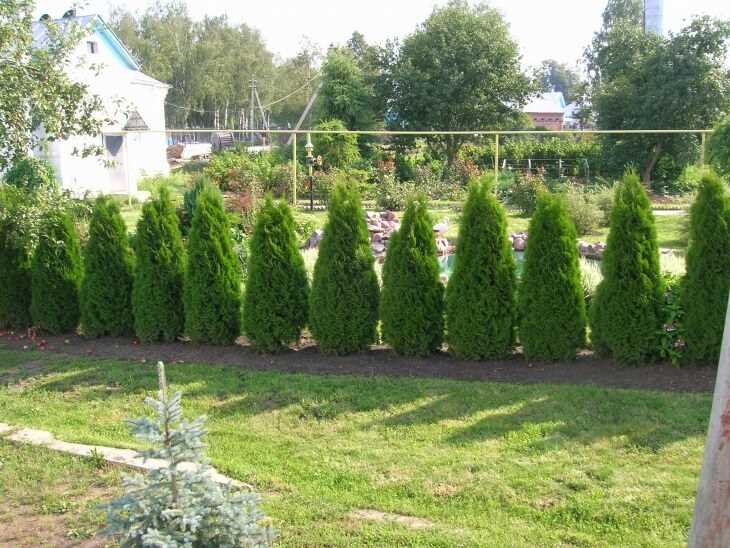
Так стоп!!! Вы всё ещё не подписаны на наши каналы в Телеграмм и Дзен? Посмотрите: ТГ - (@historyfantasydetectivechat) и Дзен (https://dzen.ru/myshortsstorys)
Туя предпочитает светлое место, поэтому для успешной посадки необходимо выбрать участок с хорошей освещенностью. Изгородь должна получать достаточно солнечного света в течение дня, чтобы растения могли полноценно развиваться.
2. Почва и дренаж
Туя предпочитает плодородные почвы с хорошей влагоудерживающей способностью. Перед посадкой рекомендуется подготовить почву, внести органические удобрения и обеспечить достаточный дренаж, чтобы избежать залегания воды, что может привести к гниению корней.
3. Защита от сквозняков

Туя чувствительна к сквознякам, поэтому важно выбрать место, защищенное от сильных ветров. Идеальным вариантом может быть посадка изгороди рядом с другими деревьями или забором, которые могут служить естественным барьером от ветра.
Следуя этим советам садовода, вы сможете выбрать оптимальное место для посадки изгороди из туи, обеспечивая ей необходимые условия для роста и развития.
Как подготовить почву для посадки туи
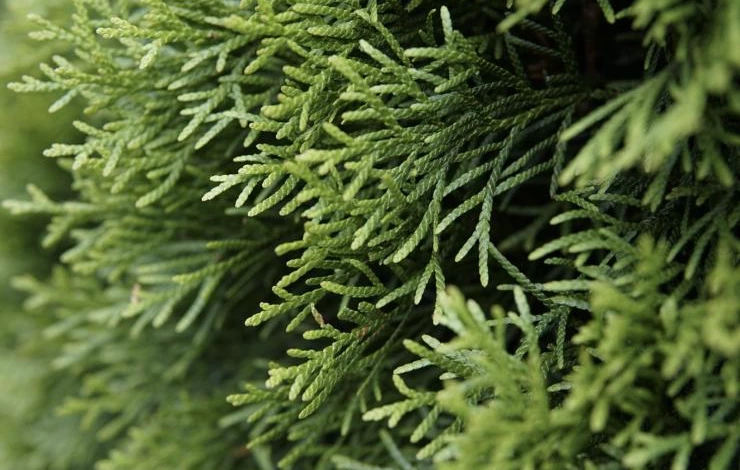
Подготовка почвы перед посадкой туи — важный этап, который определит будущее здоровье и развитие растения. Садоводы дают следующие советы:
- Выберите солнечное место для посадки туи, исключите затененные участки, так как туя предпочитает яркий свет.
- Очистите участок от сорняков и других растений, чтобы туя не конкурировала за питательные вещества и воду.
- Раскопайте яму для посадки туи, глубина и ширина которой должны быть в два раза больше размеров кома земли, в котором находится растение.
- Добавьте в яму органическое удобрение или компост, чтобы обогатить почву питательными веществами.
- Перед посадкой туи, убедитесь, что корни растения хорошо пропитаны водой.
- Поставьте туи в яму и аккуратно расправьте корни.
- Засыпьте яму землей, хорошо уплотнив ее вокруг корней.
- Полейте туи обильно после посадки, чтобы обеспечить начальное укоренение.
Следуя этим советам, вы создадите благоприятные условия для развития вашей изгороди из туи. Важно помнить, что регулярное поливание и подкормка также необходимы для здоровья и красоты растения.
Особенности посадки туи
Советы садовода о посадке туи помогут создать красивую и ухоженную изгородь. При выборе места для посадки туи следует учитывать ее предпочтения к влажности почвы и освещению. Туя предпочитает солнечные участки с влажной почвой.
Для посадки туи рекомендуется выбирать молодые растения, которые легко приживаются. При посадке следует учесть глубину и ширину ямы: они должны быть пропорциональны размерам корневой системы туи. Корни туи необходимо аккуратно разложить в яме и засыпать их плодородной землей.
Обрезка туи играет важную роль в формировании и поддержании красивой и плотной изгороди. Первую обрезку рекомендуется проводить через 2-3 года после посадки, чтобы дать растению возможность укрепиться и развиться. После этого, регулярная обрезка обеспечит правильный рост и форму туи.
Полив туи важен для ее здоровья и красоты. Регулярный полив поможет избежать пересыхания и увядания растения. В летний период туя нуждается в большем количестве влаги, особенно при жаркой погоде. Однако, следует избегать застоя влаги, чтобы не вызвать гниение корней.
Как правильно обрезать туи
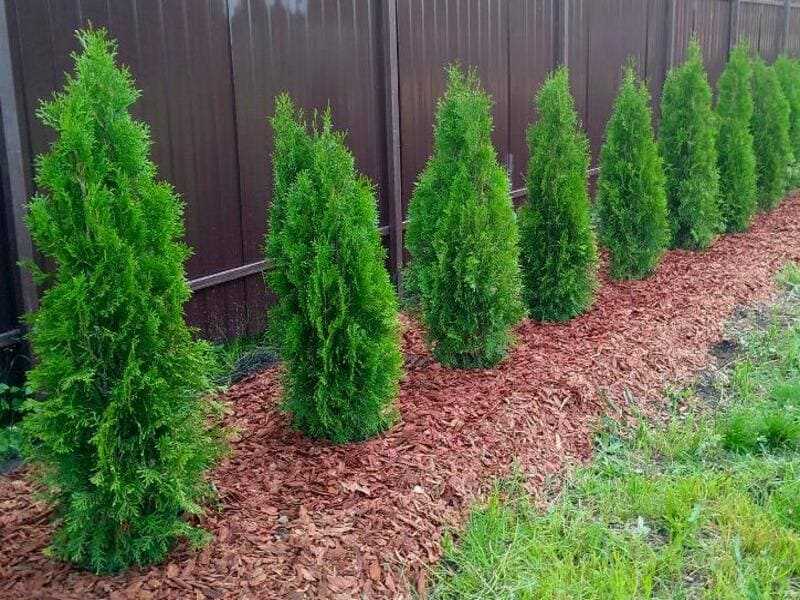
Обрезка изгороди из туи – важный этап ухода за растением, который способствует его правильному развитию и формированию. Садоводы делятся своими советами, как проводить обрезку туи.
1. Выберите правильное время для обрезки

Лучшее время для обрезки туи – весна или начало лета, когда растение активно растет. Не рекомендуется обрезать туи осенью или зимой, так как это может нанести вред растению и замедлить его рост.
2. Используйте острый инструмент

Для обрезки туи рекомендуется использовать острый секатор или ножницы. Тупые инструменты могут повредить ветки и вызвать застои в росте растения.
3. Формируйте изгородь поэтапно
Обрезайте туи поэтапно, чтобы постепенно формировать желаемую форму изгороди. Не удаляйте слишком много веток за один раз, чтобы избежать стресса для растения.
4. Удаляйте поврежденные и больные ветки

При обрезке туи удаляйте поврежденные и больные ветки, чтобы предотвратить распространение заболеваний. Оставляйте здоровые ветки, чтобы растение могло продолжать расти и развиваться.
5. Подкармливайте туи после обрезки
После обрезки туи рекомендуется провести подкормку растения специальными удобрениями для хвойных растений. Это поможет туи восстановиться после обрезки и стимулировать его рост.
Как обеспечить полив туи

Один из важных аспектов ухода за изгородью из туи – это полив. Садоводы рекомендуют уделять особое внимание поливу туи, особенно во время жарких летних месяцев.
Советы по поливу туи:
- Поливайте туи регулярно, особенно в период активного роста и в жаркую погоду. Убедитесь, что почва вокруг растений равномерно увлажнена.
- Поливайте растения утром или вечером, когда солнце не так активно, чтобы предотвратить ожоги на хвоях.
- Используйте метод капельного полива или систему полива, чтобы обеспечить равномерное распределение влаги по всей изгороди.
Не забывайте также о правильной подкормке туи. Регулярное внесение удобрений поможет растениям быть здоровыми и красивыми.
Как подкормить туи для их здоровья
Правильная подкормка туи является важным элементом ее ухода. Это помогает растению сохранять здоровье и красоту на протяжении всего сезона. Вот несколько советов от опытного садовода, как правильно подкормить туи:
- Выберите подходящий удобритель для туи. Рекомендуется использовать специальные комплексные удобрения для хвойных растений, содержащие все необходимые макро- и микроэлементы.
- Подкармливайте туи весной и осенью. Весной удобрение поможет растению восстановить силы после зимы и активно расти, а осенью подкормка способствует накоплению питательных веществ перед зимовкой.
- Правильно дозируйте удобрение. Важно следовать инструкции на упаковке и не перебарщивать с количеством удобрения. Избыток питательных веществ может негативно сказаться на здоровье туи.
- Распределите удобрение равномерно вокруг основы растения. Не стоит наносить удобрение прямо на ствол туи, чтобы избежать ожогов и повреждений корней.
- После подкормки туи необходимо поливать обильно, чтобы удобрение равномерно проникло в почву и достигло корневой системы.
Следуя этим советам по подкормке туи, вы сможете обеспечить растению все необходимые питательные вещества для его здоровья и красоты. Не забывайте проводить регулярные подкормки в течение сезона, чтобы туи росли быстро и красиво.
Как ухаживать за изгородью из туи в зимний период
Зимний период требует особого внимания при уходе за изгородью из туи. Во-первых, необходимо правильно подготовить растения к холодам при посадке. Рекомендуется выбирать сорта туи, которые хорошо переносят зимние условия и морозы. Также важно обеспечить хорошую дренажную систему при посадке, чтобы избежать залегания воды и обмерзания корней.
В зимний период изгородь из туи требует особого подхода к поливу. Во время заморозков необходимо уменьшить поливы до минимума, так как вода может промерзать и повредить корни растений. Однако при продолжительных сухостях или засухах необходимо организовать регулярный полив, чтобы растения не испытывали дефицита влаги.
Обрезка также играет важную роль в уходе за изгородью из туи в зимний период. Следует удалить все сухие, поврежденные или больные ветки, чтобы предотвратить распространение болезней и повреждений. Также рекомендуется провести формировочную обрезку, чтобы поддерживать желаемую форму и плотность изгороди. При обрезке следует учитывать морозоустойчивость и сопротивляемость туи к зимним условиям.
Советы опытного садовода по уходу за изгородью из туи в зимний период включают и подкормку растений. Рекомендуется проводить подкормку в конце осени или в начале зимы, используя органические удобрения, такие как компост или перегной. Это поможет улучшить питательность почвы и обеспечить дополнительное питание для растений в зимний период.
Вопрос-ответ:
Какую тую выбрать для создания изгороди?
При выборе туи для создания изгороди рекомендуется остановиться на сортах, которые хорошо переносят стрижку и обладают плотной листвой. Например, сорт «Смарта» или «Брабандер».
Какой должна быть ширина и высота изгороди из туи?
Ширина и высота изгороди из туи зависят от ваших предпочтений и назначения изгороди. Обычно рекомендуется создавать изгородь высотой от 1,5 до 2,5 метра и шириной от 0,5 до 1,5 метра.
Как правильно посадить тую для создания изгороди?
Для посадки туи следует выбрать место с хорошей освещенностью и хорошим дренажем. Сажать туи рекомендуется осенью или весной. Глубина ямы для посадки должна быть такой, чтобы корневая шейка туи была на уровне почвы. После посадки туи следует хорошо полить и мульчировать почву вокруг.
Как часто нужно обрезать изгородь из туи?
Обрезка изгороди из туи проводится несколько раз в год. Первую обрезку рекомендуется делать весной, чтобы дать туе форму. Далее нужно обрезать изгородь несколько раз в течение лета для поддержания формы и плотности листвы. Последний обрез проводится осенью перед началом холодов.
Как правильно поливать и подкармливать изгородь из туи?
Изгородь из туи нужно поливать регулярно, особенно в жаркую погоду. Полив должен быть достаточным, чтобы влага проникла глубоко в почву. Что касается подкормки, то туи рекомендуется подкармливать комплексным удобрением весной и осенью.


